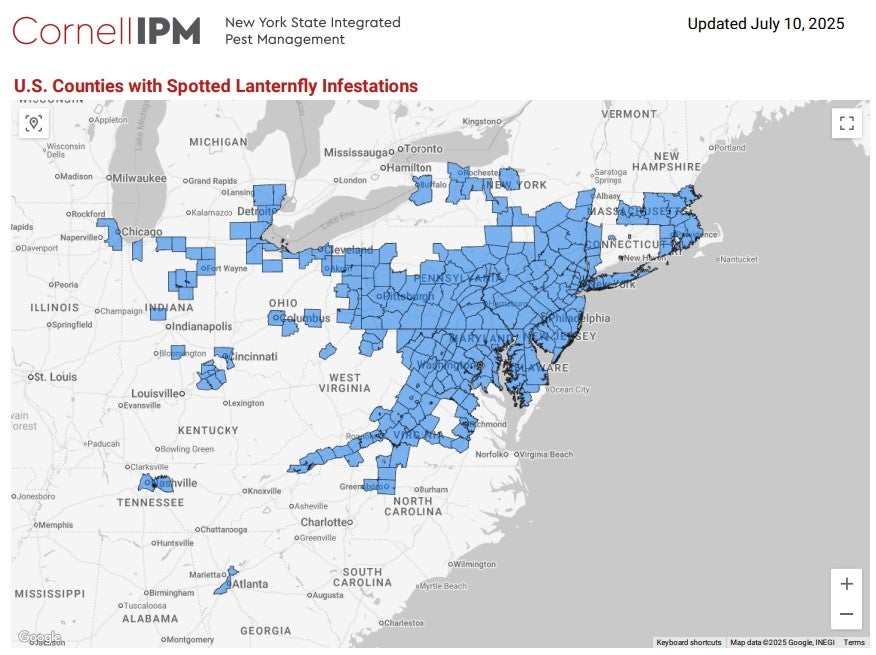
Spotted lanternfly is native to China, India, and Vietnam. Since the first detection in Berks Co., PA in 2014, populations are currently in 18 states: Connecticut, Delaware, Georgia, Illinois, Indiana, Kentucky, Maryland, Michigan, New Jersey, New York, North Carolina, Ohio, Pennsylvania, Rhode Island, Tennessee, Virginia, and West Virginia. In August of 2021, RIDEM announced that a single SLF adult was reported in Warwick, RI, marking the first SLF detection in the state. In August of 2022, yet another SLF adult was reported in Smithfield, RI. Shortly after, the USDA announced that clusters of SLF were found along Route 7 in Smithfield, confirming Rhode Island’s first SLF population. To date, spotted lanternfly is established in Providence and Kent County, but have also been recorded in Newport and Washington County.
Nymphs and adults can disperse naturally by jumping with their hind legs, and adults can also fly short distances. However, the spread of spotted lanternflies is greatly facilitated by human activity. All three life stages may “hitch-hike” to new areas in vehicles or on infested equipment, materials, or commodities. Too see the SLF spread forecast, visit the Temple University SLF Dashboard.
Consequently, Pennsylvania, Virginia, Maryland, Delaware and New Jersey have imposed internal state quarantines, while New York has imposed an external quarantine to restrict the movement of infested materials. For more information on infested materials. For more information on how residents, businesses, and visitors in infested areas can comply with quarantine regulations, see the Penn State Extension publication and PA Department of Agriculture checklist.
SLF Host Range
Nymphs and adults have been reported to feed on 70+ host plant species. Spotted lanternflies are planthoppers in the family Fulgoridae, which have piercing-sucking mouthparts that are used to feed on the phloem of their hosts. Their broad host range includes grapevines, fruit trees, ornamentals, hardwoods, and more. However, current research and field observations have demonstrated a preference for certain hosts, such as tree-of-heaven (Ailanthus altissima), grapevines, black walnut, hops, and maples. For a full list of known hosts, see the SLF North American Plant Usage list.
Host plant preferences may vary based on spotted lanternfly life stage, time of year, availability of hosts in the landscape, and health of trees. Understanding seasonal host phenology of the spotted lanternfly will aid in effective management of this pest.

